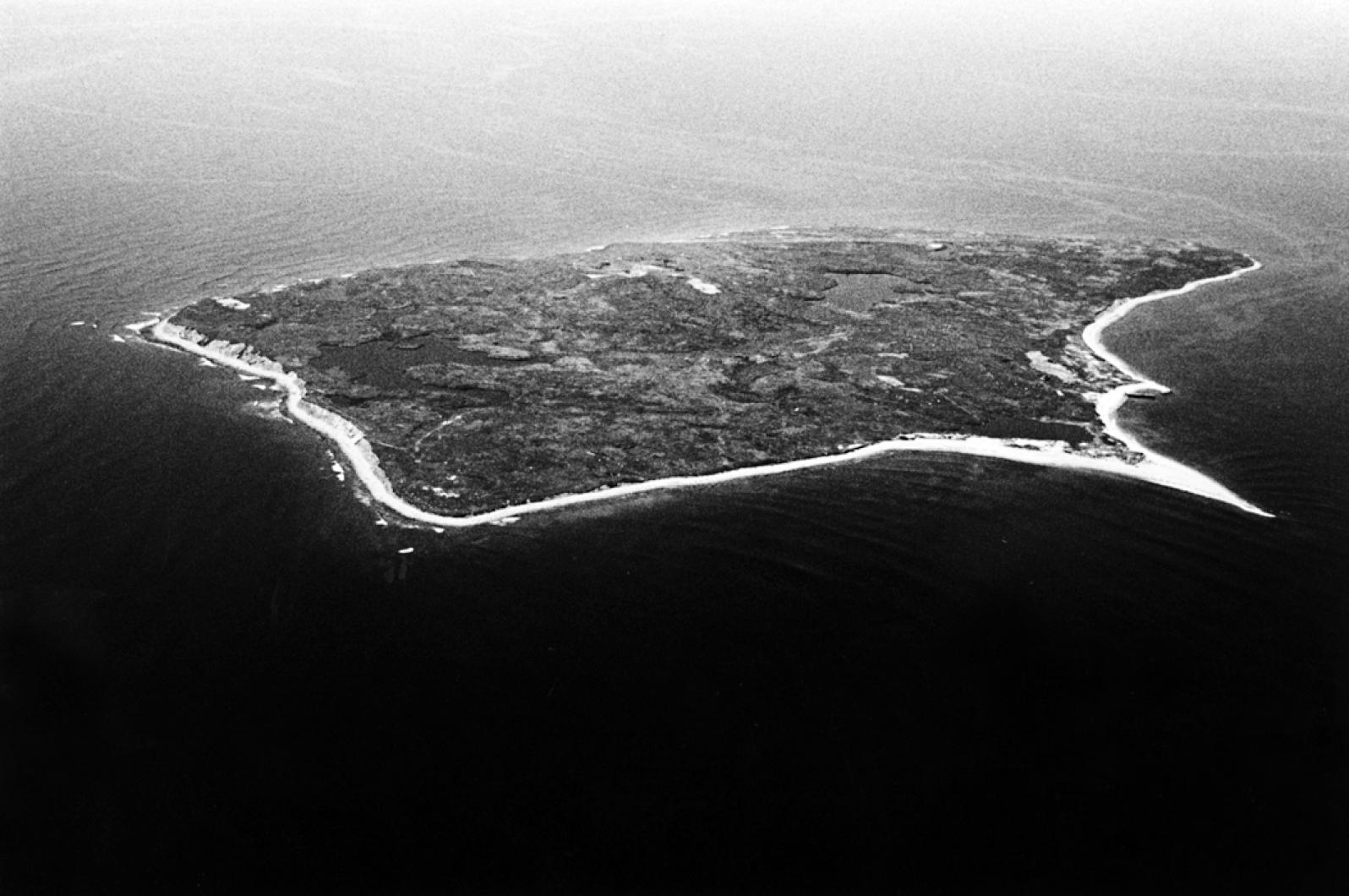Detached from Martha’s Vineyard, yet still a part of it in a civic sense because it is embraced within the town of Chilmark, stands Noman’s Island, seaward isle of mystery and legend. Contrary to supposition, the name was derived from association with an early Wampanoag sachem, Tequenoman.
A hundred years ago Noman’s, as all old time Vineyarders know the island, was of considerable importance. The Gazette of May 21, 1846, reported the following item:
“A gentleman from the Island of Noman’s Land came to our office a day or two since to subscribe for the Gazette. He informed us, among other things, that there were three families residing on the Island, and that four of the men attached to them, had taken this season, in open boats, about 130 quintals of codfish, besides attending to their farms . . . We understand that these codfish sell more readily and command a higher price than any other in the markets, especially in New Bedford, where they are well known. Allowing them to bring $3.75 per quintal, which we presume will be fully realized, it amounts to the handsome sum of $487.50.”
Noman’s Land codfish excelled those of Cape Cod, and led to a seasonal custom which impressed its character upon Vineyard life for more than a generation. Vineyard fishermen and their families made regular visits to Noman’s for the spring and fall fishing, especially the latter, and many a Thanksgiving was observed in Gulltown, as the fishing settlement was known, with dinner of cod and such fixings as were available.
Gulltown was not unlike Lobsterville of a few years ago, or Menemsha. It was an improvised settlement of small houses and huts in which fishermen could live with their families for months at a time, but fishing dominated the scene and there was no elaboration.
Since Noman’s Land offered no safe anchorage or shelter, the old double-ended boats which took their name from the island, were hauled out on the beach nightly by oxen, and launched again for the next day’s fishing.
For decades the codfishing on Noman’s Land was carried on in this way, requiring the greatest hardihood and resourcefulness not only on the part of the fishermen but on the part of their wives. Many a Vineyard child saw part of his bringing up on Noman’s and could recall in later years the odd island life and the experiences it afforded.
On Noman’s the gulls were so tame that, by being careful, a child could catch one. The island, unfenced, was roamed by large flocks of sheep, and it was said that the constant booming of the surf made the sheep deaf.
Noman’s was always an island of storms and wrecks. Women and children often watched the laboring vessels off the shore, and hardly ever did a full gale occur that at least one craft was not wrecked or stranded. Many stories have come down about the ships which made their graves in the rocks at the foot of the cliffs of Noman’s Land. Once there was a lumber vessel which went to pieces and so distributed her cargo that it was possible to walk entirely around the Island beaches on pine planks.
An account of one Noman’s Land wreck is given in the Vineyard Gazette of Jan. 3, 1851, from the pen of Capt. Abraham Osborn, who was called to the island to “attend to the wrecked schr. Pizarro, and cargo, stranded there.” He found on his arrival the total wreck of “the schr. O. H. Perry, of Sullivan, with the loss of all her crew on the western part of the Island, on the day previous.”
“Early on Tuesday morning,” Captain Osborn reported, the schr. was discovered by the inhabitants of the island, about five rods from the shore, among a bed of rocks. “Shortly after, the vessel began to break up, and the cries of the crew, through the roar of the elements and the crash of the waves, were distinctly heard for assistance; but alas! none could be rendered.”
As against the grim tragedy of such events, which were not rare, came interludes of fun-making and high spirits, for when the storms were in progress it was impossible for the fishermen to go out. The might be kept ashore for a week at a time, and, in the absence of other entertainment, frequently resorted to practical jokes.
But history and romance are hardly separable in the annals of the island. Tales of murder and violence, of piracy and barratry are many. A deep hole still remains where a Vineyarder once dug treasure, and one tale is that he never found the gold because at night the ghost of a swarthy pirate appeared and filled in just enough of the hole to prevent success the next day. Another tradition of lost treasure is that of two men in a small boat, one of whom looked over the stern and saw the prize.
Thinking that he would possess it entirely for himself, he took a hasty bearing to be sure of the spot, and did not tell his friend. Later when he returned with gear to raise the treasure from the bottom, he could not find it, though he searched until his desperation amounted to hysteria.
Compiled by Hilary Wall
library@mvgazette.com




Comments
Comment policy »